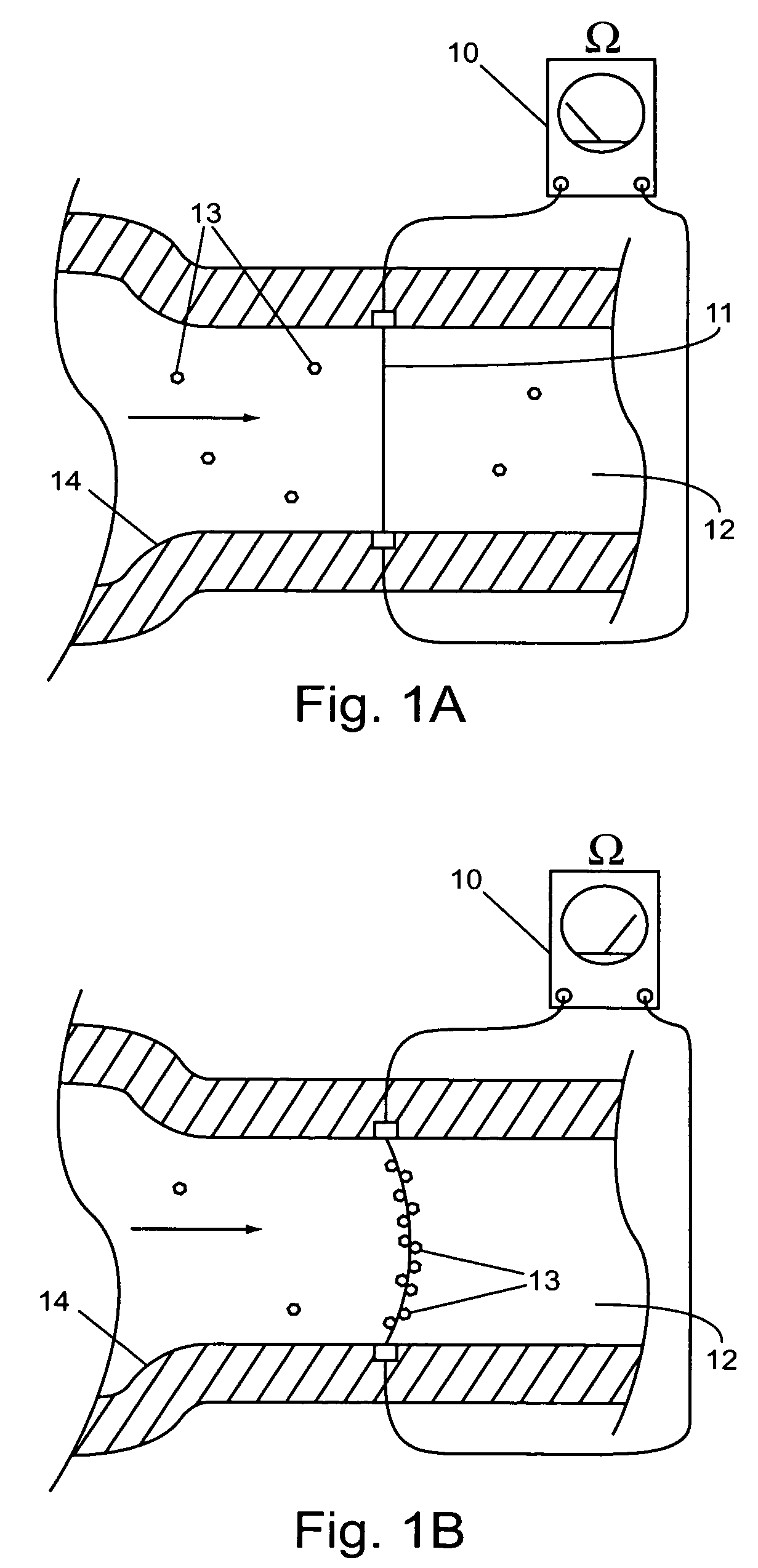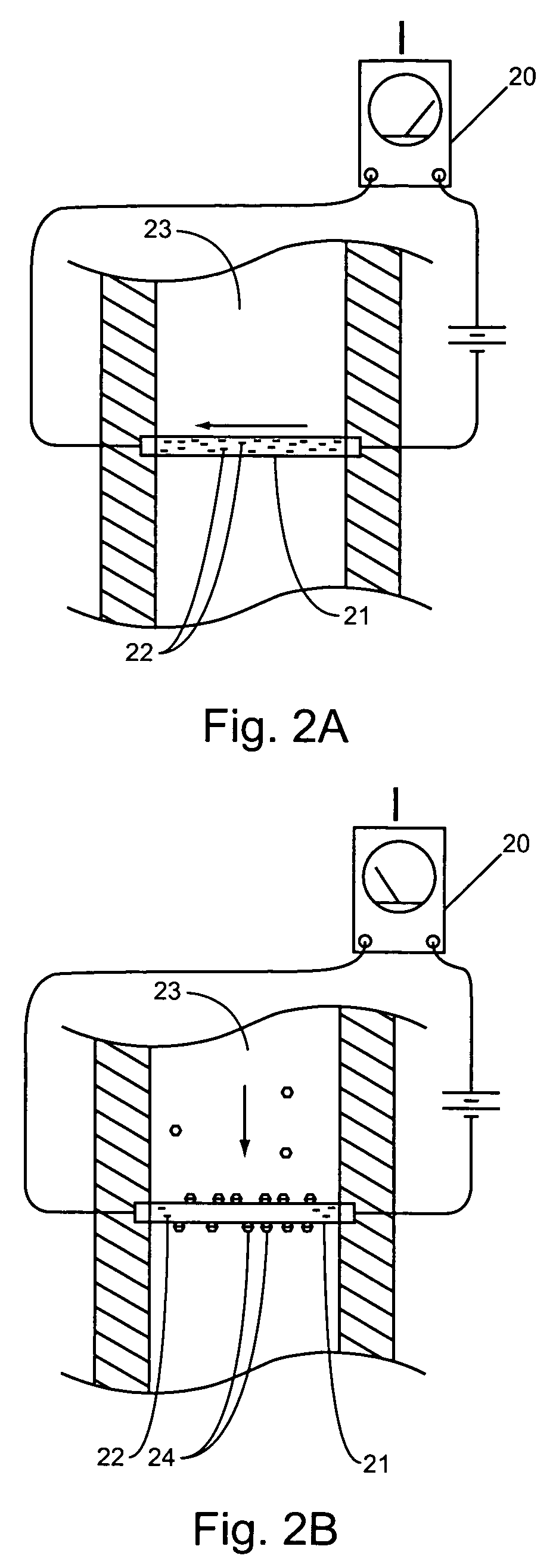Nanowire-based sensor configurations
a sensor configuration and nanowire technology, applied in the field of nanowire-based sensor configurations, can solve the problems of insufficient adaptability, high cost, and insufficient spectrophotometric detection, and achieve the effects of increasing hydrodynamic drag, enhancing sensitivity and/or range of analysis, and increasing the ra
- Summary
- Abstract
- Description
- Claims
- Application Information
AI Technical Summary
Benefits of technology
Problems solved by technology
Method used
Image
Examples
Embodiment Construction
Nanowire-based sensor configurations of the invention provide, e.g., sensors and methods to detect analytes in process, analysis, and / or microfluidic systems. The sensors can be, e.g., nanowires mounted in chambers and in electrical contact with electrical parameter detectors for detection of changes in the nanowire electrical properties on interaction with an analyte. The methods for sensing analytes can include, e.g., contacting a nanowire mounted in a chamber of a microfluidic system with an analyte, and detecting a change in an electrical parameter associated with the nanowire to sense the analyte. The sensors and methods of the invention can be used, e.g., to detect analytes of interest in chromatographic separations and / or sample cells of microarrays.
Nanowire-Based Sensors
The sensors of the invention include, for example, nanowires mounted in chambers of devices wherein the presence of an analyte of interest induces a detectable change in an electrical parameter associated wit...
PUM
| Property | Measurement | Unit |
|---|---|---|
| diameter | aaaaa | aaaaa |
| diameter | aaaaa | aaaaa |
| diameter | aaaaa | aaaaa |
Abstract
Description
Claims
Application Information
 Login to View More
Login to View More - R&D
- Intellectual Property
- Life Sciences
- Materials
- Tech Scout
- Unparalleled Data Quality
- Higher Quality Content
- 60% Fewer Hallucinations
Browse by: Latest US Patents, China's latest patents, Technical Efficacy Thesaurus, Application Domain, Technology Topic, Popular Technical Reports.
© 2025 PatSnap. All rights reserved.Legal|Privacy policy|Modern Slavery Act Transparency Statement|Sitemap|About US| Contact US: help@patsnap.com



